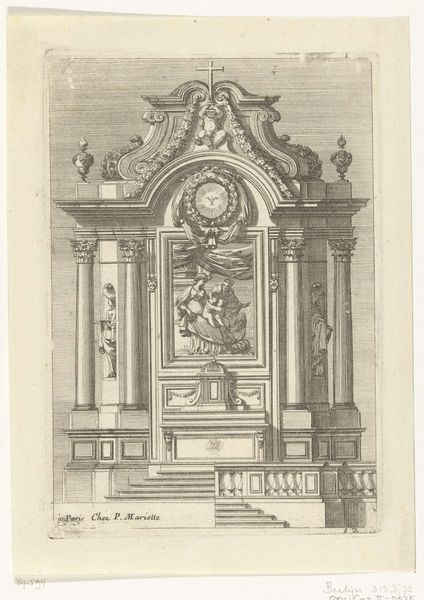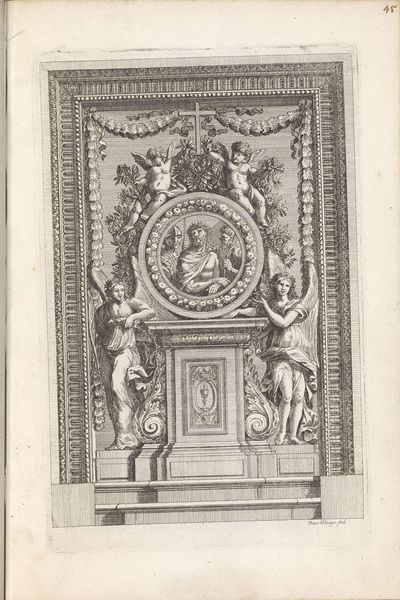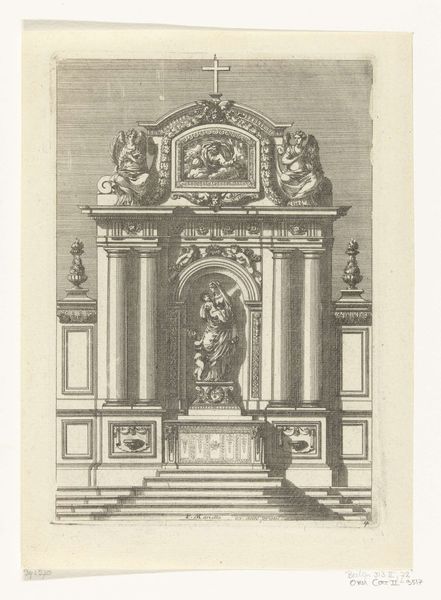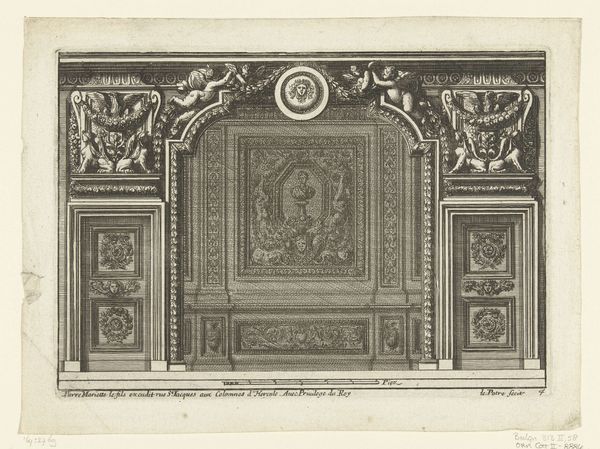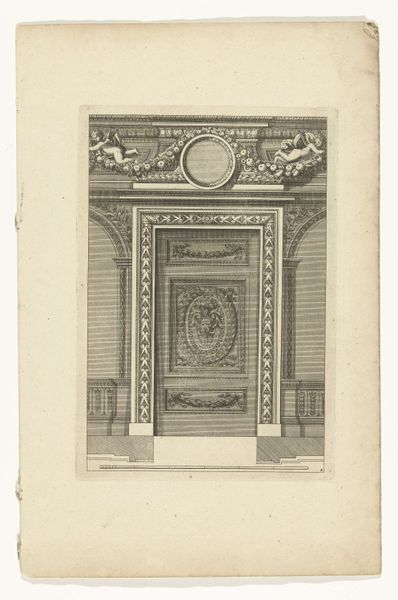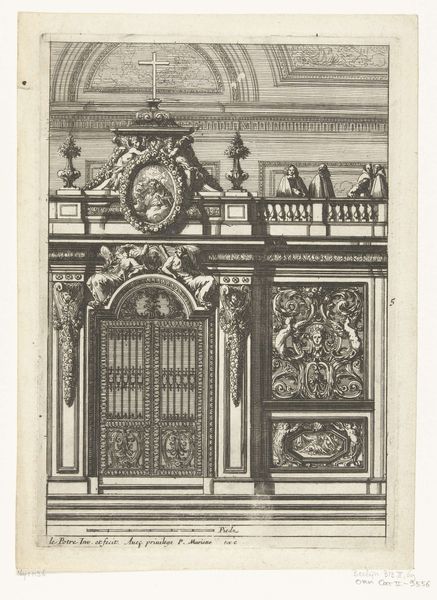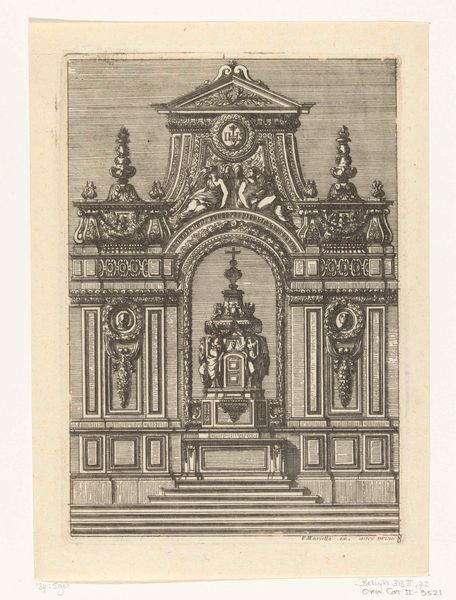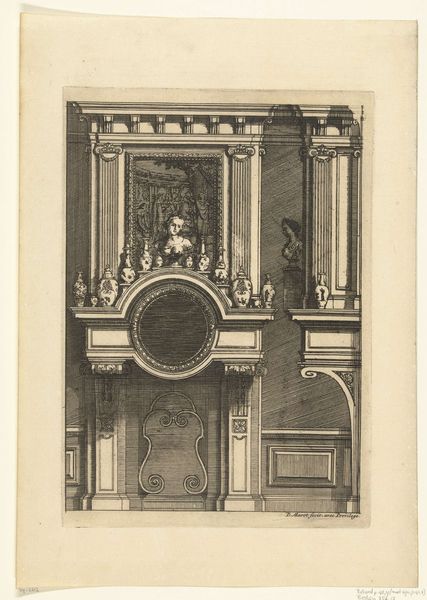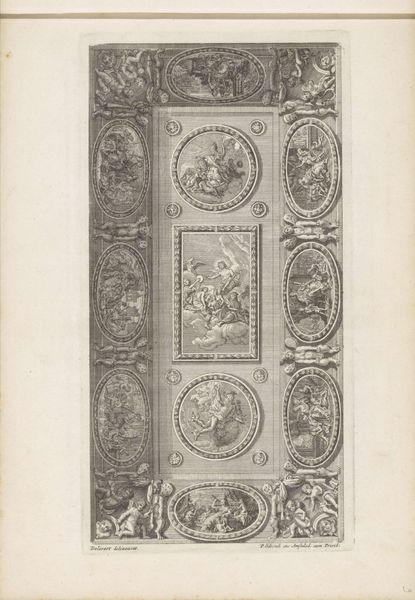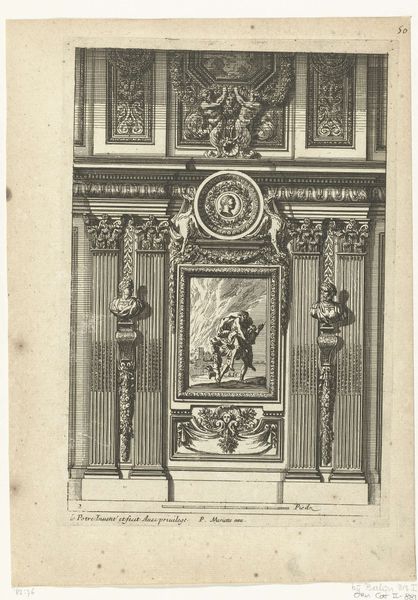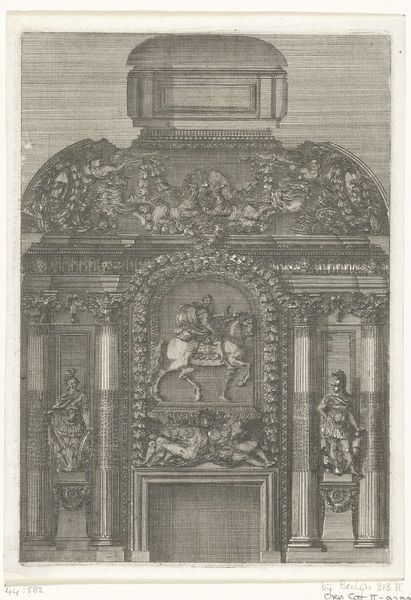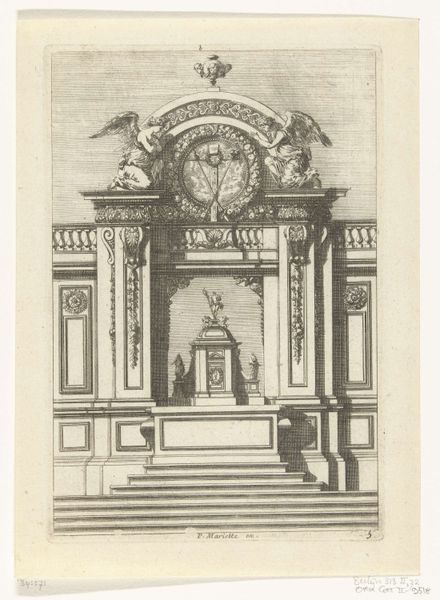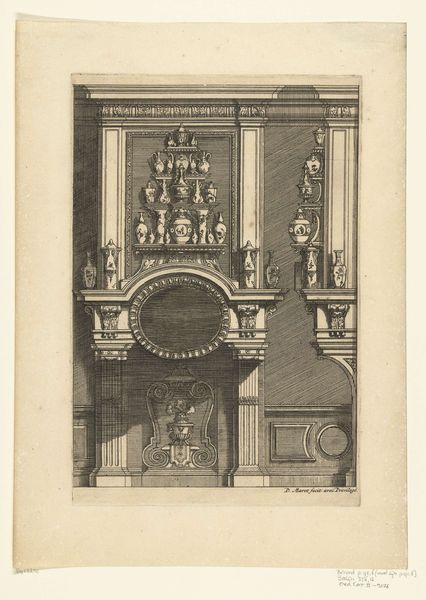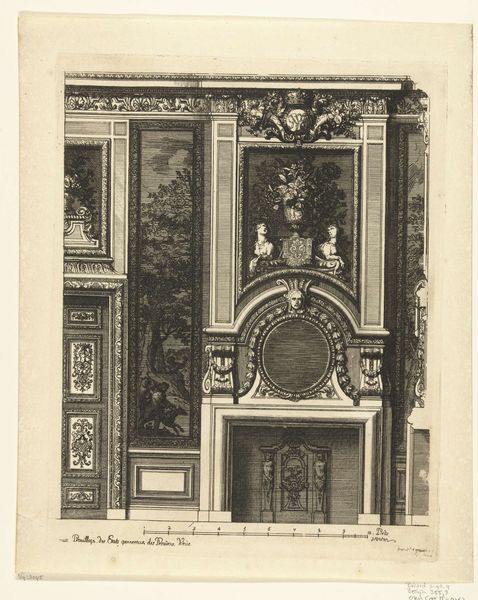
Titelblad: Nouvelle Cheminees a Panneaux de Glace, a la maniere 'd France before 1800
0:00
0:00
Dimensions: height 218 mm, width 173 mm
Copyright: Rijks Museum: Open Domain
Editor: So, this print, "Titelblad: Nouvelle Cheminees a Panneaux de Glace, a la maniere 'd France," created before 1800, showcases an ornate fireplace design. The meticulous detail in the engraving feels almost overwhelming. What strikes you most about its historical context? Curator: It's crucial to view this within the rise of architectural print culture and the burgeoning consumer market of the late 18th century. Consider the title – it explicitly references "a la maniere 'd France." This immediately signals its engagement with French style, a highly desirable commodity at the time. What does this suggest to you about the intended audience and its role within the socio-political climate of the period? Editor: It speaks to a desire for French sophistication, perhaps aimed at a wealthy clientele outside France trying to emulate that lifestyle? A form of aspirational identity? Curator: Precisely! Prints like these played a significant role in disseminating architectural trends. This wasn’t just about providing instructions; it was about circulating and legitimizing certain aesthetic values. Do you see any specific visual cues that support this idea? Editor: The sheer detail and symmetry—every scroll and flourish seem meticulously placed to convey grandeur. Maybe it was supposed to evoke that feeling of high-class sophistication? Curator: And how might the display of this print in one's home or office also be a political statement? Editor: It would demonstrate one’s taste, education, and perhaps even political alignment – favoring certain cross-cultural trends, I imagine. Curator: Exactly. Art and design choices were never purely aesthetic; they were deeply intertwined with social and political meaning. This print offers a window into how visual culture actively shaped class distinctions and cultural preferences of the era. Editor: I never thought of interior design prints as holding such political weight. Now, I'll see these objects with a fresh perspective on art’s ability to reflect socio-political currents. Curator: Indeed, analyzing the function and circulation of imagery helps reveal so much about the time periods in which art and design was being actively developed.
Comments
No comments
Be the first to comment and join the conversation on the ultimate creative platform.
